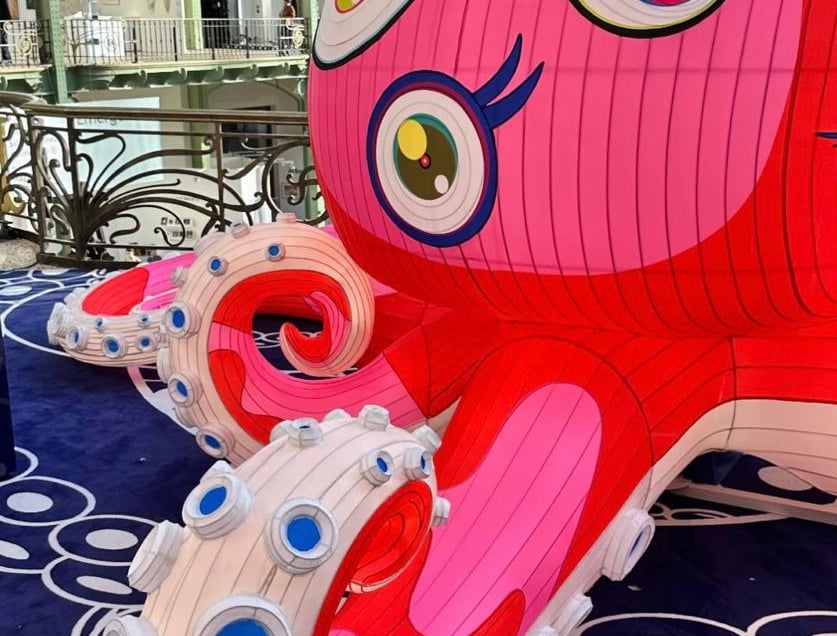Paris in Motion: Art Basel 2025 Between Market Spectacle and Curatorial Depth
The 2025 edition of Art Basel Paris reaffirmed the French capital’s pivotal role in the international contemporary art scene, showcasing blockbuster sales alongside thoughtful curatorial dialogues. From VIP previews to emerging galleries, the fair highlighted the delicate balance between market power and cultural exploration, inviting reflection on the evolving landscape of art, collecting, and institutional engagement.
INTERNATIONAL FAIRS & EXHIBITION
Charlotte Madeleine CASTELLI
10/27/20252 min read


The 2025 edition of Art Basel Paris, held at the Grand Palais from October 24 to 26, with previews beginning on the 22nd, reaffirmed Paris’s strength and relevance as a strategic hub for both the contemporary art market and cultural discourse. According to official data, 206 galleries from 41 countries, including 65 French participants, took part in the event, which welcomed over 73,000 visitors.
Yet it is not merely the numbers that capture attention; the context in which they emerge is equally significant. At a time when the global art market exhibits signs of slowing, the Paris fair demonstrated from the outset a tangible vitality, both in its exhibitions and commercial outcomes. However, this vitality is nuanced, offering critical and educational insights that merit closer examination.
Within the fair, a subtle tension was palpable between what might be described as the “spectacle apparatus” of the event and the more understated, day-to-day practices of curation and collecting. On one hand, blockbuster sales, such as Gerhard Richter’s Abstraktes Bild (1987) sold for approximately $23 million, and the rapid-fire negotiations of the VIP previews, highlighted a highly ritualized and efficient market agenda. On the other hand, curatorial efforts strived to balance these icons with both rediscovered historical figures, like Dadamaino, and emerging voices such as Yu Nishimura and Özgür Kar, establishing dialogues across generations and media.
This dual register, top-tier market activity and serious curatorial inquiry, remains one of the fair’s greatest strengths, yet it also raises important questions. The introduction of the “Avant Première” day for ultra-VIPs, preceding the official preview, concentrated high-stakes transactions within the first few hours, potentially disadvantaging mid-sized and emerging galleries presenting later. Moreover, while sales were robust and the atmosphere vibrant, the European and French contexts remain sensitive: a significant proportion of galleries in France express economic pessimism due to rising costs, difficulties in attracting new collectors, and the vulnerability of smaller operations.
Paris Internationale, which held its eleventh edition during the same week, played a complementary yet crucial role. With its more agile structure, experimental curatorial approach, and direct engagement opportunities, it underscored that Paris’s art ecosystem is not solely defined by major players and multi-million-dollar deals. Rather, it thrives on fluid relationships, emerging galleries, accessible price ranges, and lively dialogue with the frontiers of contemporary research.
From a curatorial perspective, these observations invite reflection on the role fairs can and should play today: not merely as marketplaces, but as cultural forums where the practice of making, collecting, and communicating art is continuously negotiated. In this sense, the integration of a public program across museums, institutional spaces, and the city during Art Basel Paris strengthens the experiential and educational dimensions of the fair.
In conclusion, the 2025 edition can be considered successful on many levels. Paris has reaffirmed itself as a global art hub, consolidating its centrality within the international network. Yet the emphasis on “market superstars” should not obscure the need for a more sustainable balance—one that addresses pressures on mid-sized galleries, fosters generational renewal among collectors, and preserves curatorial depth beyond the immediacy of the “red dot” of a sale. For curators, critics, and those fostering dialogues between art, memory, and community, the true measure of success lies not only in attendance figures and sales but in how such events contribute to a resilient and enduring culture of art.
© Charlotte Madeleine Castelli | All rights reserved
